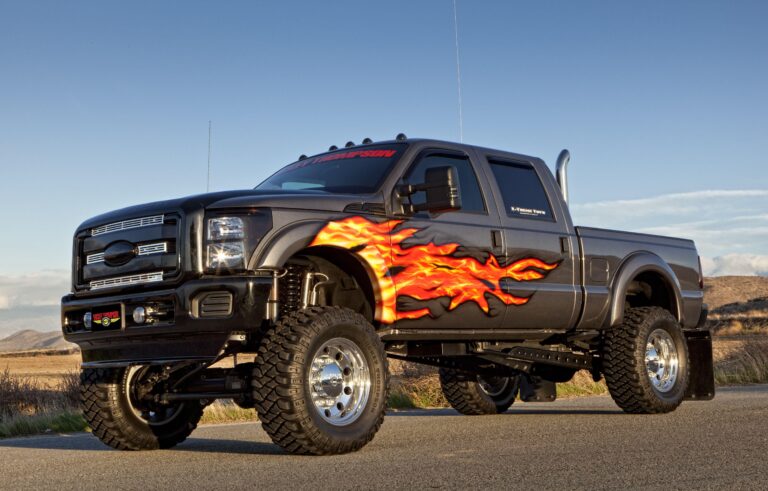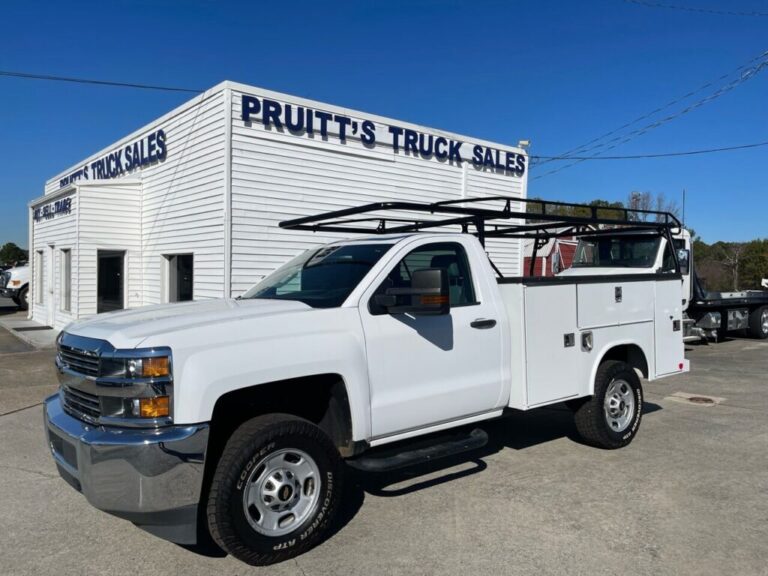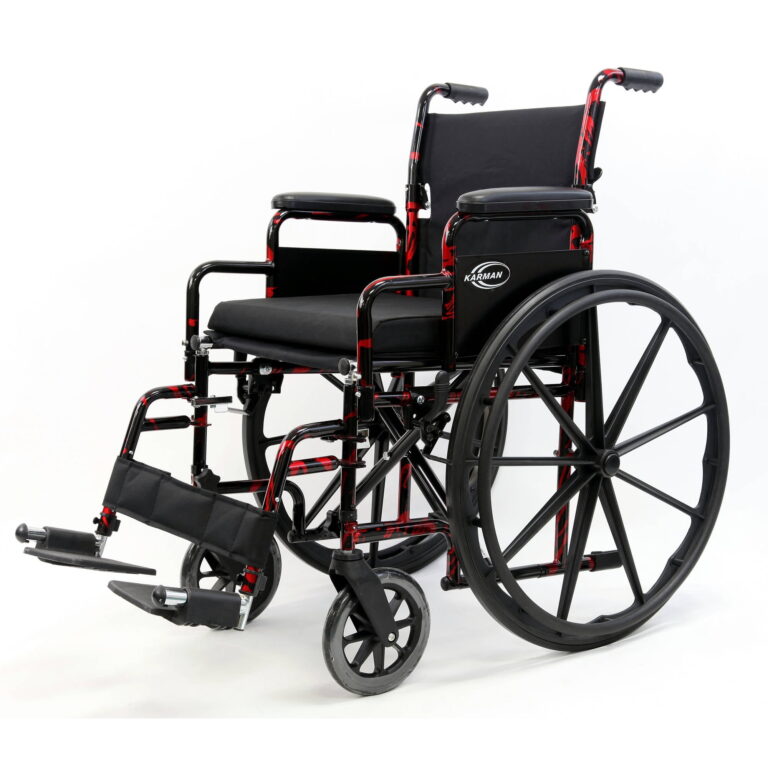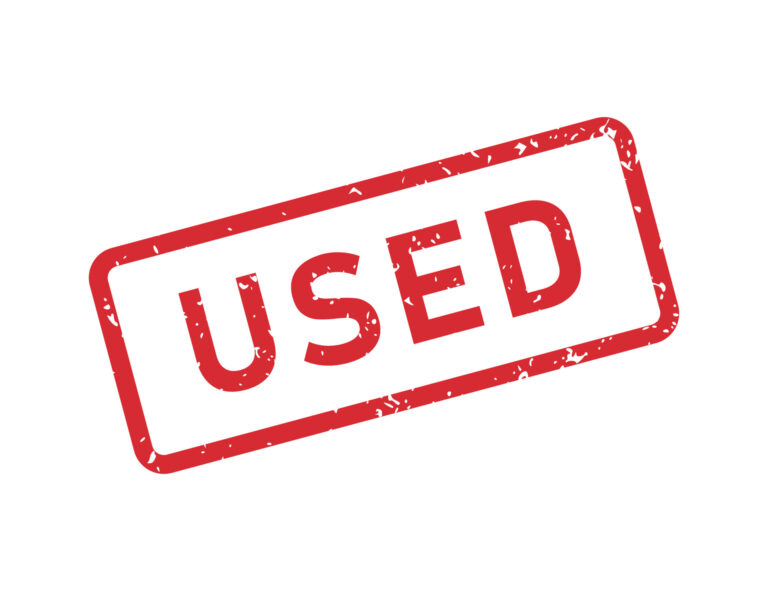Old Cabover Trucks For Sale: A Comprehensive Guide to Buying Your Piece of Trucking History
Old Cabover Trucks For Sale: A Comprehensive Guide to Buying Your Piece of Trucking History cars.truckstrend.com
The open road, the rumble of a classic diesel engine, and the unmistakable silhouette of a vintage machine – for many, these evoke a powerful sense of nostalgia and adventure. Among the most iconic and distinct vehicles to ever grace American highways are cabover trucks. Known for their "Cab Over Engine" (COE) design, these flat-nosed behemoths were once a ubiquitous sight, dominating the trucking landscape for decades. Today, "Old Cabover Trucks For Sale" represent more than just used vehicles; they are a gateway to a bygone era, offering a unique blend of historical significance, classic aesthetics, and surprisingly practical utility.
This comprehensive guide delves into the world of old cabover trucks for sale, exploring their enduring appeal, where to find them, what to look for, and the journey of owning and potentially restoring these magnificent machines. Whether you’re a seasoned collector, a budding restorer, or simply captivated by their unique charm, understanding the nuances of these vintage workhorses is key to making an informed and satisfying purchase.
Old Cabover Trucks For Sale: A Comprehensive Guide to Buying Your Piece of Trucking History
The Enduring Appeal of Old Cabovers
Why do old cabover trucks continue to capture the imagination of enthusiasts worldwide? Their allure stems from several distinct factors:
- Nostalgia and Classic Truck Culture: For many, cabovers represent the golden age of trucking. They conjure images of cross-country hauls, independent owner-operators, and the rugged individualism that defined the industry. Owning one is a tangible connection to this rich history, making them popular at truck shows, parades, and historical events.
- Unique Aesthetics: There’s no mistaking a cabover. Their flat, often imposing front ends, high-mounted cabs, and compact wheelbase give them a distinctive, almost pugnacious look often referred to as "bulldog" styling. This unique design stands in stark contrast to modern conventional trucks, making them instant head-turners.
- Practical Advantages (Then and Now): While largely replaced by conventional trucks for over-the-road hauling in North America, cabovers offered significant advantages in their prime, particularly in regions with strict length laws. Their shorter overall length allowed for longer trailers, maximizing cargo capacity. They also boasted superior maneuverability in tight urban environments due to their compact turning radius and excellent forward visibility. These attributes still hold true for certain specialized applications or for those navigating crowded showgrounds.
- Investment Potential: Well-maintained or professionally restored classic cabovers can appreciate in value, particularly rare models or those from iconic manufacturers like Peterbilt, Kenworth, and Mack. They represent a tangible asset that can also provide immense personal enjoyment.
- Simplicity and Durability: Many older cabovers were built with mechanical rather than electronic systems, making them simpler to diagnose and repair for those with mechanical aptitude. Their robust, over-engineered components were designed for millions of miles, contributing to their remarkable longevity.

Types and Manufacturers of Classic Cabovers
The world of classic cabovers is diverse, encompassing a range of sizes, designs, and manufacturers. Understanding these categories can help narrow down your search:
Heavy-Duty Workhorses (Class 8)
These were the kings of the highway, built for long-haul trucking and heavy loads. They often feature powerful diesel engines, robust chassis, and comfortable (for their time) sleeper cabs.

- Kenworth K100/K100E: Arguably the most iconic American cabover, known for its rugged durability, classic lines, and powerful Cummins or Detroit Diesel engines. Highly sought after by collectors.
- Peterbilt 352/362: Peterbilt’s answer to the K100, these trucks boast a reputation for quality, style, and owner-operator appeal. The "Needlenose" 352 and its wider, more modern 362 successor are both highly desirable.
- Freightliner (Early Models): Known for their lightweight aluminum cabs and frames, Freightliners were popular among fleets for their fuel efficiency and capacity. Early "Bubblenose" and "Cab-Behind-Engine" (CBE) models are less common but historically significant.
- Mack F-Series: Recognizable by their distinctive Mack grille and often powered by legendary Mack engines, these were true workhorses, known for their toughness and longevity.

Medium-Duty/Utility (Class 6-7)
These smaller cabovers were often used for local delivery, refuse collection, fire apparatus, and specialized applications where maneuverability was paramount.
- Ford C-Series: One of the most prolific cabovers ever produced, the Ford C-Series (and its Mercury M-Series counterpart in Canada) was a versatile chassis used for everything from fire trucks to beverage delivery. Its distinctive "smiling" grille and tilt-cab design are instantly recognizable.
- Chevrolet Tiltmaster/GMC Astro: GM’s heavy-duty cabovers, these trucks were robust and powerful, often found in vocational applications.
- International Loadstar/S-Series: International Harvester produced a wide range of cabovers, including the utilitarian Loadstar and later S-Series, which were common in municipal fleets and agricultural settings.
Specialized/Rare Manufacturers
Beyond the major players, several smaller or more specialized manufacturers produced cabovers that are now highly collectible:
- White: Known for their strong presence in the early to mid-20th century, White produced a variety of cabovers, often with unique styling.
- Autocar: Primarily a vocational truck manufacturer, Autocar cabovers were built for demanding tasks like concrete mixing and heavy hauling.
- Diamond Reo: A successor to Diamond T and Reo, these cabovers offered distinctive styling and robust construction.
Where to Find Old Cabover Trucks For Sale
The search for an old cabover can be an adventure in itself. Here are the most common avenues to explore:
- Online Marketplaces:
- eBay Motors: A vast marketplace with a constantly changing inventory of everything from project trucks to fully restored examples.
- Facebook Marketplace/Groups: Numerous classic truck groups and marketplace listings can yield local finds or connect you with sellers.
- Specialized Truck & Equipment Sites: Websites like TruckPaper.com, MyLittleSalesman.com, and MachineryTrader.com often list older trucks, though you might need to filter for vintage models.
- Classic Car/Truck Sites: Hemmings.com, ClassicCars.com, and OldTrucks.com specifically cater to vintage vehicle enthusiasts.
- Specialized Classic Truck Dealers: A growing number of dealers specialize in vintage commercial vehicles. While prices might be higher, these dealers often offer inspected, running, or even restored trucks, saving you time and effort.
- Auctions:
- Major Collector Car Auctions: Companies like Mecum Auctions and Barrett-Jackson occasionally feature high-end, restored vintage trucks.
- Local/Farm Auctions: These can be excellent places to find unrestored "barn finds" or working trucks at potentially lower prices, though they require quick decision-making and often "as-is" purchases.
- Government/Fleet Surplus Auctions: Municipalities or large corporations sometimes auction off older, well-maintained vehicles.
- Word-of-Mouth & Networking: Attend truck shows, join classic truck forums, and network with other enthusiasts. Many great finds are made through personal connections.
- Driving and Scouting: Keep an eye out in rural areas, old industrial lots, or even behind repair shops. Sometimes, a forgotten gem is just waiting to be discovered.
What to Look For When Buying an Old Cabover
Purchasing an old cabover requires careful inspection and a realistic understanding of its condition and your intentions.
Condition Categories:
- Project Truck: Typically non-running, incomplete, or severely rusted. Requires extensive mechanical and cosmetic work. Lowest purchase price, highest restoration cost/effort.
- Running/Driving Condition: Mechanically sound enough to move under its own power, but likely needs significant cosmetic or minor mechanical attention. Good for those who want a usable truck quickly or prefer to restore over time.
- Restored/Show Quality: Fully restored to original or better-than-original condition. Highest purchase price, but requires minimal immediate work. Ideal for collectors or those wanting a turn-key classic.
Key Inspection Points:
- Frame & Chassis: This is the backbone of the truck. Look for cracks, bends, previous accident damage, and severe rust, especially where the frame rails meet crossmembers or spring hangers. Patchwork repairs can be a red flag.
- Engine & Drivetrain:
- Leaks: Oil, coolant, fuel, air, or transmission fluid leaks.
- Smoke: Black smoke (unburnt fuel), blue smoke (burning oil), white smoke (coolant/condensation) can indicate engine issues.
- Noises: Listen for unusual knocking, tapping, or grinding.
- Transmission: Check for smooth shifting (if manual) or proper engagement (if automatic).
- Differential/Axles: Listen for howling or grinding noises.
- Fuel Type: Most heavy-duty cabovers are diesel (Cummins, Detroit Diesel, Caterpillar, Mack), while medium-duty ones might be gasoline (Ford, Chevy).
- Cab & Interior:
- Rust: Crucial for cabovers. Check floorboards, cab corners, rocker panels, door bottoms, and the "doghouse" (engine cover inside the cab). Water leaks are common.
- Tilt Mechanism: For tilt-cabs, ensure the mechanism operates smoothly and locks securely. Check hydraulics if applicable.
- Glass & Seals: Look for cracked or missing glass. Check window and door seals for deterioration, which leads to water leaks and rust.
- Gauges & Electrical: Test all lights, wipers, horn, and ensure gauges are working. Wiring issues can be complex in older vehicles.
- Interior Condition: Seats, dash, headliner, and door panels will likely need attention, but assess the extent of the damage.
- Brakes & Suspension:
- Air Brakes: If equipped, listen for air leaks, check air pressure build-up, and test the parking brake.
- Hydraulic Brakes: Check fluid levels, master cylinder, and brake lines for leaks.
- Springs & Shocks: Look for broken leaves in leaf springs, worn-out air bags (if air ride), and leaky shocks.
- Tires: Check tread depth, sidewall cracks, and date codes. Old, cracked tires are dangerous.
- Paperwork: Ensure the seller has a clear title in their name. Ask for any available service records or previous ownership history.
Professional Inspection: For any significant purchase, it’s highly recommended to have a qualified mechanic specializing in heavy trucks or vintage vehicles perform a pre-purchase inspection. Their experienced eye can spot issues you might miss.
Restoration vs. Preservation: Your Path Forward
Once you acquire an old cabover, you’ll face decisions about its future.
- Full Restoration: This involves a complete disassembly, frame-off restoration, engine and drivetrain rebuild, new paint, and a fully refurbished interior. It’s the most expensive and time-consuming option but yields a show-quality vehicle. Requires significant budget, specialized skills, and patience.
- Preservation/Patina: Many enthusiasts prefer to preserve the original "patina" – the weathered look of an aged truck. This path focuses on mechanical reliability, structural integrity, and stopping rust, while leaving the exterior largely as-is. It’s often more affordable and allows the truck’s history to shine through.
- Customization/Hot Rodding: Some owners choose to modernize their cabovers with updated engines (e.g., modern diesels for more power/efficiency), air ride suspensions, custom interiors, and unique paint schemes. This creates a one-of-a-kind vehicle, but purists might frown upon it.
Your choice depends on your budget, mechanical skills, available time, and ultimate vision for the truck.
Owning and Maintaining an Old Cabover
Owning a vintage cabover is a rewarding experience, but it comes with its own set of considerations:
- Parts Availability: While major components for popular models (like Cummins NTC engines or Rockwell transmissions) are often available new, new old stock (NOS), or remanufactured, body panels and interior trim can be challenging to find. Networking with other owners and scouring salvage yards are crucial.
- Finding Qualified Mechanics: Not all modern truck shops are equipped or willing to work on older, non-computerized vehicles. Seek out independent shops specializing in classic trucks or heavy equipment. Learning to do some work yourself is highly beneficial.
- Insurance: Standard auto insurance policies may not cover vintage trucks adequately. Look into specialized classic vehicle insurance providers (e.g., Hagerty, Grundy) who understand the unique value of these machines.
- Storage: These are large vehicles. Ensure you have adequate, secure, and preferably covered storage to protect your investment from the elements.
- The Joy of Ownership: Despite the challenges, the pride of driving, showing, and maintaining a piece of trucking history is immense. Old cabovers are conversation starters and a testament to American engineering.
Estimated Price Guide for Old Cabover Trucks For Sale
Prices for old cabover trucks can vary dramatically based on make, model, year, engine, condition, and location. This table provides a general estimate, but always conduct thorough research for specific models.
| Make/Model | Year Range | Condition: Project (Non-Running, Rusty) | Condition: Running (Needs Work) | Condition: Restored (Show Quality) |
|---|---|---|---|---|
| Kenworth K100/K100E | 1970s-1980s | $5,000 – $15,000 | $15,000 – $40,000 | $70,000 – $150,000+ |
| Peterbilt 352/362 | 1970s-1980s | $4,000 – $12,000 | $12,000 – $35,000 | $60,000 – $120,000+ |
| Mack F-Series | 1960s-1980s | $3,000 – $10,000 | $10,000 – $25,000 | $40,000 – $80,000 |
| Freightliner (Early) | 1960s-1980s | $2,000 – $8,000 | $8,000 – $20,000 | $35,000 – $70,000 |
| Ford C-Series | 1957-1990 (Wide) | $1,000 – $6,000 | $5,000 – $15,000 | $20,000 – $50,000 |
| International (Older) | 1960s-1980s | $1,000 – $5,000 | $4,000 – $12,000 | $15,000 – $40,000 |
Disclaimer: These are rough estimates and can fluctuate significantly based on rarity, specific engine/transmission, geographical location, and current market demand.
Frequently Asked Questions (FAQ) about Old Cabover Trucks For Sale
Q1: Are old cabovers hard to drive compared to modern trucks?
A1: Yes and no. They lack modern amenities like power steering (in some early models), air conditioning, and advanced electronic controls. Manual transmissions often require double-clutching. However, their excellent forward visibility and shorter wheelbase can make them surprisingly maneuverable in tight spaces once you get accustomed to their driving characteristics.
Q2: Are parts still available for old cabover trucks?
A2: For common mechanical components (engines, transmissions, axles from major manufacturers like Cummins, Detroit Diesel, Rockwell, Eaton), parts availability is generally good, often through new, remanufactured, or used channels. Body panels, interior trim, and specific manufacturer-unique parts can be much harder to find and may require fabrication or sourcing from donor trucks.
Q3: Can I use an old cabover for modern hauling or business?
A3: While mechanically possible, it’s generally not practical or economical for regular commercial hauling due to fuel efficiency, lack of modern comfort features, and potential compliance issues (e.g., emissions). They are best suited for light-duty work, parades, shows, personal enjoyment, or as a unique marketing tool for a business.
Q4: What’s the main difference between a conventional and a cabover truck?
A4: The key difference is engine placement. In a conventional truck, the engine is in front of the driver (under a long hood). In a cabover, the engine is located beneath the cab, directly under or behind the driver, allowing for a shorter overall vehicle length.
Q5: Are old cabovers fuel-efficient?
A5: Generally, no. Older diesel engines, while incredibly durable, were not designed with modern fuel efficiency standards in mind. Expect lower MPG compared to contemporary trucks. Gasoline-powered cabovers will be even less efficient.
Q6: What’s the typical cost of restoring an old cabover?
A6: Restoration costs vary widely depending on the truck’s initial condition, the desired level of restoration, and whether you do the work yourself or hire professionals. A full, professional, show-quality restoration can easily cost anywhere from $50,000 to well over $150,000, often exceeding the truck’s initial purchase price. Mechanical refreshes or "driver-quality" restorations will be significantly less.
Conclusion
The pursuit of "Old Cabover Trucks For Sale" is more than a transaction; it’s an embarkation on a journey into the heart of trucking history. These distinctive machines offer a compelling blend of nostalgia, unique design, and the tangible satisfaction of owning a piece of American industrial heritage. Whether your aim is a meticulous restoration, a preserved patina runner, or a custom showpiece, the rewards of bringing an old cabover back to life are immense.
Approach your search with patience, armed with the knowledge to inspect thoroughly, understand the potential challenges, and envision the future of your chosen classic. The open road awaits, and behind the wheel of a vintage cabover, every mile becomes a tribute to the enduring spirit of the open highway.





